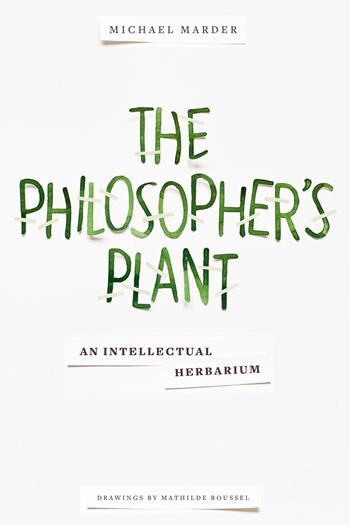To Each Philosopher, Her or His Plant
In his wonderful book The Philosopher’s Plant, Michael Marder creates a “herbarium of ideas, collecting theories of the most important Western thinkers, from Greek Antiquity to our days, as though they were botanical specimens preserved on the pages of [a] book. Here is an article he recently featured on his Los Angeles Review of Books Channel about the relationship between philosophy and plants:
To Each Philosopher, Her or His Plant
By Michael Marder
Although I am a philosopher, I have always been averse to abstract speculation. Throughout my work, I have relied on rather mundane figures that stimulate thinking: fire, dust, plants… Everything and everyone in the world can be thought-provoking, worthy of contemplation and wonder — not a boringly unremarkable and ultimately replaceable representative of a genus or an Idea, but a source of inexhaustible singularity.
My intention behind The Philosopher’s Plant was to create a herbarium of ideas, collecting theories of the most important Western thinkers, from Greek Antiquity to our days, as though they were botanical specimens preserved on the pages of my book. I also wished to weave a web of associations that would link certain common plants to particular ideas in the reader’s mind. Of course, it would have been absurd to put together a herbarium without the specimens themselves. To solve this problem, I did two things. First, I paired each philosopher whose life and thought I wanted discuss with a tree, flower, cereal, or grass that was mentioned in her or his work and that, in most cases, had something to do with her or his biography. And, second, I invited a fantastic French artist, Mathilde Roussel, to visualize these “philosoplants” and give an aesthetic dimension to the hybridized herbarium I had theorized about.
At times, it was difficult to decide which plant would correspond to any given philosopher. Not because their texts are virtual deserts insofar as vegetation is concerned, but because, more like a jungle, they are teeming with botanical metaphors, examples, allegories, and analogies.
Take, for instance, St. Augustine. I selected pears to characterize him, because he confesses having stolen them in his youth together with a gang of friends. Just for the thrill of it! Now, I could have also chosen a fig tree, as a faithful botanical rendition of his life and thought, since it is under this tree that he flung himself on the grass and repented for his sins. I can already see the readers smile knowingly: the fig tree betokens the original sin in the Judeo-Christian tradition, according to which Adam and Eve covered their nakedness with fig leaves after eating from the Tree of Knowledge. For Augustine, both the pear and the fig are just that — symbols of spiritual reality and its “fallenness” into sin. But the pear won in the end, because fruit in general are important to Augustine as signs for the “works of mercy” or good deeds; and here was a would-be-saint stealing fruit, transgressing against the works of mercy themselves.
In the case of Plato, the choice of a plane tree was rather obvious to me from the get-go. He had to be reincarnated in an enormous tree that cast its shadow over the rest of Western philosophy. Fortunately, I did not need to invent this scene, which Plato himself described (or, better, encrypted) in his dialogue Phaedrus. There, he mentions in passing a majestic plane tree, underneath which the entire conversation between Socrates and Phaedrus unfolds. How did I know that Plato imperceptibly inserted himself into the dialogue? –Because his own name (which is actually a nickname) comes from the same root as the Greek word for a plane tree, platanos. What did the philosopher have in common with this plant? Plato’s biographers have various hypotheses on the subject of his nickname. The most prevalent theory is that he had broad (platys) shoulders, seeing that he was good not only in thinking but also in boxing and wrestling. Others contend that his forehead was broad. But, clearly, the consensus is that it was some sort of broadness that gave him his alias. Now, the leaves of the plane tree, too, are incredibly broad; hence, the designation of this particular plant. As they say, it’s all in the name…
The only living philosopher included in my collection is the French thinker, Luce Irigaray. For once, I had the luxury of asking the author herself which plant she most identified with. Without a doubt, the plant had to be a flower, but of what kind? We thought that a rose could be suitable, but, in the end, the choice fell on a water lily. (Irigaray indicated several preferences, leaving the final decision up to me). Why? Well, water lilies grow — you’ve guessed it! — in water, which, for Irigaray, is the element of femininity. In addition to this, they bridge different milieus, emerging from the muddy bottom of a lake toward the airy expanse above it in the shape of a pure flower. Nor should we forget that they resemble lotuses, the flowery symbols of the East, which is quite opportune because Irigaray endeavors to bridge Eastern and Western philosophies and practices in her life and way of thinking.
But which plant would correspond to me? It will be up to others to decide.
Note: A version of this text first appeared in Biographile.


